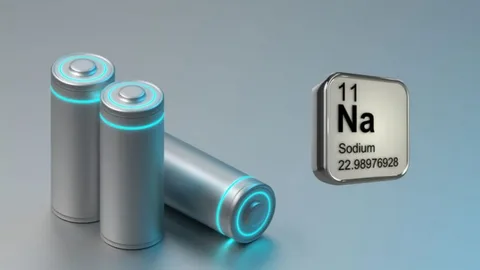Introduction
The Sodium-Ion Battery Market is rapidly emerging as a strong contender in the global energy storage landscape, offering a sustainable and cost-effective alternative to lithium-ion batteries. As demand for batteries surges across electric vehicles, renewable energy storage, and consumer electronics, sodium-ion technology is gaining attention for its abundance of raw materials and environmental advantages. With increasing pressure to decarbonize and reduce dependency on lithium, sodium-ion batteries are expected to revolutionize next-generation energy systems.
Market Drivers
The primary driver of the sodium-ion battery market is the growing global need for sustainable and low-cost energy storage solutions. Sodium is far more abundant and geographically distributed than lithium, which reduces raw material costs and supply chain risks. Technological advancements, such as improved cathode materials and enhanced energy density, are accelerating commercialization. The global push for renewable energy integration and the demand for grid-scale storage further strengthen market prospects. Moreover, governments and private companies are investing heavily in R&D to make sodium-ion batteries commercially viable for electric vehicles and stationary applications.
Market Challenges
Despite its potential, the sodium-ion battery market faces challenges related to energy density and cycle life, which currently lag behind lithium-ion batteries. Manufacturing infrastructure is still in the early stages of development, limiting large-scale production capacity. The lack of established standards and limited awareness among end-users hinder widespread adoption. Additionally, ensuring compatibility with existing battery management systems and charging infrastructure presents technical challenges.
Opportunities
The sodium-ion battery industry offers vast opportunities for innovation and market penetration. Its low cost and environmental benefits make it ideal for stationary storage and low-range electric vehicles. Strategic collaborations between material suppliers, battery manufacturers, and renewable energy companies can accelerate deployment. Research into hybrid sodium-lithium technologies and solid-state designs is expected to unlock higher energy density and better safety performance. Furthermore, regions with limited lithium reserves can leverage sodium-based solutions to build self-reliant energy ecosystems.
Regional Insights
Asia-Pacific is at the forefront of sodium-ion battery research and development, with China leading the commercialization race through key players such as CATL and HiNa Battery. Europe is following closely, with growing investments in sodium battery startups supported by the European Battery Alliance. North America is witnessing rising interest in sodium technology for grid applications and sustainable energy storage. Emerging markets in Africa and Latin America are exploring sodium-ion systems as affordable alternatives for renewable integration and rural electrification.
Future Outlook
The sodium-ion battery market holds tremendous potential to complement and, in some areas, replace lithium-ion batteries over the next decade. Continuous improvements in energy density, scalability, and manufacturing processes will push sodium-ion technology closer to mass adoption. By 2035, sodium-ion batteries could become a mainstream solution for cost-sensitive applications such as energy storage systems and urban mobility.
Conclusion
Sodium-ion batteries are redefining the future of sustainable energy storage. Their abundance, low cost, and eco-friendly profile position them as a critical enabler of the global transition toward renewable and decentralized power systems. As innovation accelerates, sodium-ion batteries could play a pivotal role in achieving energy security and environmental sustainability.

